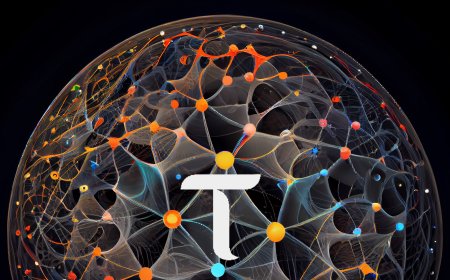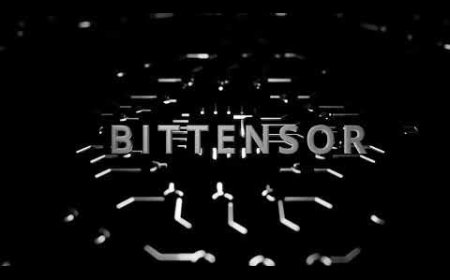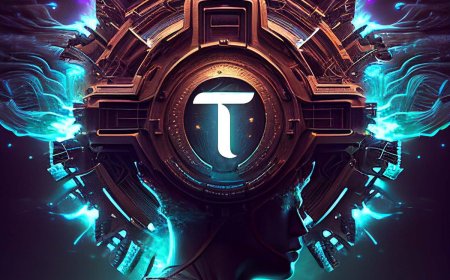Subnet 4 Controversy and the Future of Bittensor: Transparency, Fairness, and Incentive Alignment
The Bittensor network has recently faced controversy surrounding Subnet 4 and its centralized challenge API. This article delves into the issues at hand, the steps being taken to address them, and the broader implications for the Bittensor ecosystem. We'll explore the importance of transparency, fairness, and incentive alignment in decentralized networks, as well as the potential solutions being discussed by key stakeholders.

The Subnet 4 Controversy: Unraveling the Issues
Subnet 4, a key component of the Bittensor network, has come under scrutiny due to its centralized challenge API. This centralization raised concerns about the transparency and fairness of the subnet's verification mechanism. The challenge API was initially implemented to prevent lookup attacks and ensure consistency in the network's performance. However, this design choice inadvertently created a lack of transparency that could potentially undermine the trust in the subnet's operations.
In response to these concerns, the subnet owners have taken proactive steps to address the issue:
1. Requesting a reduction in subnet weight to 0.1%
2. Committing to open-source the challenge API
3. Pledging to redesign the subnet's architecture
Carol, one of the subnet owners, emphasized the importance of community trust and transparency: "We want to make sure that everything our subnet is performing to the highest point. We want to have the largest subnet on Bittensor, not just in terms of weight but during DAOw."
This move demonstrates a commitment to addressing the community's concerns and rebuilding trust in the subnet's operations. By voluntarily reducing the subnet's weight, the owners are signaling their willingness to prioritize the network's integrity over short-term gains.
The Importance of Transparency in Decentralized Networks
The Subnet 4 controversy highlights the critical role of transparency in maintaining the integrity of decentralized networks. Jake, a key figure in the Bittensor community, explained the fundamental principle behind Bittensor's consensus mechanism:
"Human consensus gets around [limitations] by forcing validators in a proof of stake that have fuzzy perspectives on the state of the world to agree. They're forced to run the same code as other peers in the network because that's what keeps them in consensus."
This transparency is essential for validators to understand what they're reaching consensus on. When parts of the system are opaque, it can lead to distrust and toxicity within the community. The ability for all participants to verify the code and processes running on the network is a cornerstone of decentralized systems, and any deviation from this principle can undermine the entire ecosystem's credibility.
Incentive Alignment and Subnet Design: Rethinking the Approach
The discussion revealed the importance of proper incentive alignment in subnet design. Carol acknowledged that the initial focus on building a product (Cibil) may have been premature:
"Bittensor subnets should be building a singular, unitary digital commodity and just driving straight in that direction as fast as they can, with no intention of making a fully-fledged company."
This realization marks a significant shift in thinking about subnet development. Instead of trying to create complete products or services, subnet owners are now encouraged to focus on producing clear, measurable digital commodities that can serve as building blocks for larger ecosystems.
Jake emphasized the need for subnets to focus on producing a clear, measurable digital commodity:
"If you can't explain in one sentence what you're producing - it's like data per second, or storage per dollar, or loss reduction at least costs, or RAG speed, or indexing performance - something like that... then probably you're wasting Tao for everybody."
This shift in perspective highlights the need for subnet owners to prioritize the creation of valuable digital commodities over building complete products or companies on top of Bittensor. By focusing on these fundamental building blocks, the network can create a more robust and versatile ecosystem that can support a wide range of applications and services.
The Role of Subnet Owners and Mining: Balancing Participation and Fairness
The conversation touched on the controversial topic of subnet owners mining their own subnets. This practice has raised concerns about fairness and potential conflicts of interest within the network. Ian (Bad English), a private investor in Bittensor, expressed concerns about the fairness of this practice:
"I have a strong opinion that subnet owners should not be mining. I think it is somewhat unfair to other miners. I think they have an incredible competitive advantage."
This perspective highlights the potential for subnet owners to leverage their insider knowledge and control over the subnet's design to gain an unfair advantage in mining operations. Such advantages could discourage other miners from participating, potentially leading to centralization and reduced network security.
Carol argued that subnet owners should be allowed to mine their subnets, but emphasized the importance of transparency:
"If you own a subnet, you should be able to run a validator. If you run a subnet, you can mine. But what's really important is that when you're mining, it's very clear, and this is why I think doxing is a good idea."
This stance advocates for a middle ground where subnet owners can participate in mining, but with full transparency about their involvement. By "doxing" or publicly disclosing their mining activities and associated keys, subnet owners can provide a level of accountability and allow the community to scrutinize their actions.
The discussion highlighted the need for clear guidelines and transparency measures to ensure fairness in the network. Possible solutions could include:
1. Implementing strict disclosure requirements for subnet owners involved in mining
2. Establishing limits on the percentage of mining power a subnet owner can control
3. Creating incentives for diverse participation in mining activities
4. Developing mechanisms to detect and penalize unfair advantages in mining
Investor Perspectives and Network Valuation: Bridging the Gap
Ian brought up important points about the relationship between the network's valuation and the value being created by subnets:
"Investors look at this from a dollar perspective, and I think in a lot of ways, Bittensor is a victim of its price appreciation. The speculation on price has driven the value of the token arguably higher than the value, maybe the current value of the network."
This perspective highlights a crucial challenge faced by many blockchain projects: the disconnect between token valuation and the actual value created by the network. In Bittensor's case, the speculative interest in AI and blockchain technologies may have driven the Tao token's price beyond what the current state of the network can justify.
Ian further elaborated on the concerns from an investor's standpoint:
"From your standard investor who buys the token and creates the valuation, they're looking for value - tangible value. I think investors look at this from a dollar perspective, and I think in a lot of ways, Bittensor is a victim of its price appreciation."
This observation underscores the need for subnet owners and developers to focus on creating tangible value that justifies the network's valuation. It also raises questions about the sustainability of the current tokenomics model and whether adjustments are needed to better align network growth with token value.

The Promise of DAOw: A Potential Solution for Incentive Alignment
The conversation touched on the potential of DAOw (previously known as deTAO) to address some of the incentive alignment issues in the network. DAOw represents a shift towards a more decentralized governance model that could help resolve some of the conflicts of interest inherent in the current subnet ownership structure.
Carol expressed optimism about DAOw's potential:
"DAOw actually exactly solves that problem because now it's not about who owns the subnet key and who's getting the 18%. What matters is community organization, the people who are interested in Bittensor, who are interested in the cross-section of AI and crypto."
This enthusiasm for DAOw reflects a broader trend in the blockchain space towards more decentralized governance models. By distributing decision-making power and rewards more evenly across the community, DAOw could help align incentives and reduce the potential for exploitation by any single group of stakeholders.
Jake agreed with the potential of DAOw, suggesting that it could help align incentives and reduce conflicts of interest within the network. The implementation of DAOw could mark a significant evolution in Bittensor's governance model, potentially addressing many of the concerns raised about fairness and transparency.
Challenges in Subnet Design and Implementation
Throughout the discussion, several challenges in subnet design and implementation were highlighted:
1. Preventing gaming and exploitation: Many subnets face the risk of being "gamed" by participants who find ways to maximize rewards without contributing meaningful value to the network.
2. Balancing complexity and accessibility: Subnet designs need to be sophisticated enough to prevent exploitation but simple enough for a wide range of participants to engage with.
3. Scaling issues: As the network grows, ensuring that subnets can handle increased load and maintain performance becomes crucial.
4. Measuring and rewarding real value: Developing mechanisms to accurately measure and reward the creation of valuable digital commodities remains a significant challenge.
5. Adapting to changing conditions: Subnets need to be flexible enough to evolve as the network grows and new use cases emerge.
Carol acknowledged these challenges and emphasized the need for continuous improvement:
"We've been thinking very heavily on what exactly that looks like. This is what we were doing in our v1.2 push that we've been talking about for the past couple weeks."
Future Directions and Opportunities
As Bittensor continues to evolve, several key opportunities and areas for development emerge:
1. Refining incentive mechanisms: Developing more sophisticated reward systems that accurately reflect the value created by different network participants.
2. Enhancing cross-subnet collaboration: Exploring ways for subnets to interact and create synergies, potentially leading to more complex and valuable AI services.
3. Improving developer tools and documentation: Making it easier for new developers to create and deploy subnets, fostering innovation in the ecosystem.
4. Expanding use cases: Identifying and developing new applications for Bittensor's decentralized AI infrastructure across various industries.
5. Strengthening community governance: Implementing and refining DAOw to ensure that the network's development aligns with the community's interests.
6. Enhancing security and reliability: Continuously improving the network's resistance to attacks and ensuring high availability of AI services.
Conclusion: Navigating the Path Forward
The Subnet 4 controversy has sparked important discussions about transparency, fairness, and incentive alignment within the Bittensor network. As the community works to address these issues, it's clear that maintaining trust and focusing on creating tangible value will be crucial for the network's long-term success.
The willingness of subnet owners like Carol to acknowledge concerns and take corrective action is a positive sign for the ecosystem. The ongoing dialogue between developers, investors, and community members will be essential in shaping the future of Bittensor.
As Jake noted, "We want to be based. I think Bad English is based. We want to have a truthful toxic environment than an untruthful not toxic one." This commitment to open, honest discussion – even when it involves criticism – will be crucial in building a robust, fair, and valuable network.
The potential implementation of DAOw and the renewed focus on creating clear, valuable digital commodities offer promising paths forward. However, challenges remain in balancing the interests of various stakeholders and ensuring that the network's valuation aligns with the real-world value it creates.
Ultimately, the success of Bittensor will depend on its ability to foster a transparent, fair ecosystem that incentivizes the creation of valuable AI commodities. By addressing current challenges head-on and remaining open to feedback and innovation, Bittensor has the potential to revolutionize the intersection of AI and blockchain technology.
As the community moves forward, it will be essential to:
1. Implement and refine transparency measures across all subnets
2. Develop clear guidelines for subnet owners regarding mining and validation
3. Focus on creating and measuring the value of digital commodities produced by each subnet
4. Carefully evaluate and implement DAOw to improve incentive alignment
5. Foster open dialogue between all stakeholders to address concerns and drive innovation
6. Continuously refine subnet designs to prevent gaming and ensure fair competition
7. Bridge the gap between speculative token value and tangible network utility
8. Explore new use cases and applications for Bittensor's decentralized AI infrastructure
By tackling these challenges and staying true to its core principles of decentralization and innovation, Bittensor can position itself as a leading platform in the AI-blockchain space, delivering real value to users, developers, and investors alike. The journey ahead may be complex, but with continued community engagement and a commitment to transparency and fairness, Bittensor has the potential to reshape the landscape of decentralized AI networks.
Source : @Opentensor Foundation
















